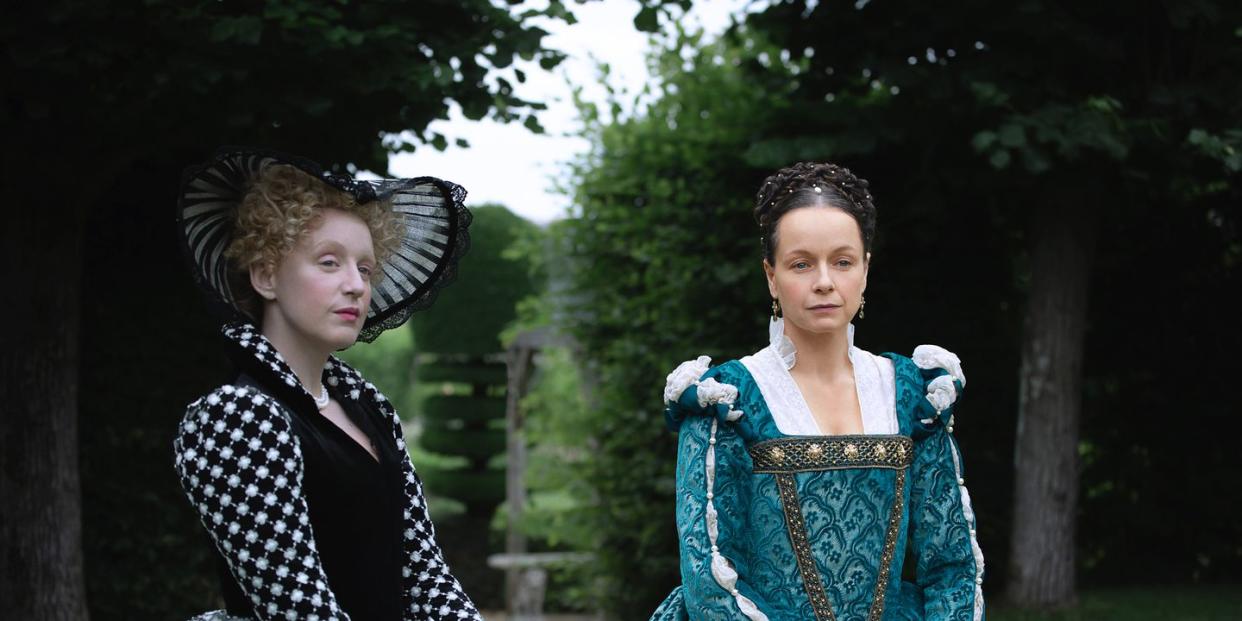Why Catherine de Medici Is a Fitting Icon for Modern Times

- Oops!Something went wrong.Please try again later.
"Hearst Magazines and Yahoo may earn commission or revenue on some items through the links below."
Dazzling the world with lavish expenditure and artfully crafted public image may be a mainstay of our TikTok times, but it is not a new secret to success. In the 15th and 16th centuries, the Medici family used extravagant patronage to gain and keep political power. Small wonder, then, that two of this fall’s guiltiest pleasures, the Starz series The Serpent Queen and Maggie O’Farrell’s novel The Marriage Portrait, show Medici women—Catherine de’ Medici, the consort of one 16th-century French king and the mother of three more, and Lucrezia de’ Medici, Duchess of Ferrara, whose husband was thought to have murdered her after their 1558 marriage—living and dying by their family creed of extravagant display. (Catherine also inspired Dior’s spring 2023 runway show in Paris.)
Born in 1519 and 1545, respectively, the women were descendants of Lorenzo I de’ Medici, the Florentine statesman, financier, and arts patron whose commissions to Botticelli and Michelangelo earned him the nickname Il Magnifico. For Lorenzo as for his grandfather Cosimo I de’ Medici—who poured the equivalent of $500 million into art acquisitions and public works—philanthropy went hand in glove with political might.
One Renaissance pundit, Niccoló Machiavelli, argued that a wise ruler should save rather than squander his wealth. But the soft power of conspicuous consumption became a key tactic for later sovereigns; the practice found perhaps its most opulent expression in the palace of Versailles, an advertisement for Louis XIV’s power and glory.

The Sun King inherited his flair for ostentation from his Medici great-grandmother, Catherine. Dispatched to France at age 14 to marry a son of King François I, she initially held a precarious position at court when her dowry wasn’t paid off and the future King Henri II failed to immediately get her pregnant. To compensate, Catherine manipulated her public image and became the most powerful woman in France.
If Catherine seems a fitting icon for our times, it’s as the master of a skill now essential to Kardashians and Middletons alike. In The Serpent Queen she thwarts detractors by “distract[ing] them with finery!” This strategy doesn’t work for everyone. In The Marriage Portrait, Lucrezia’s looming murder is invoked on the first page, and the trappings that adorn her in flashbacks assume an ominous cast. Herein lies a cautionary tale: Sometimes a girl-boss image translates into genuine influence, but other times, to borrow an image from O’Farrell, it is “like a shimmering kite on a string”: beguiling yet flimsy, and not long for this world.
This story appears in the November 2022 issue of Town & Country. SUBSCRIBE NOW
You Might Also Like

